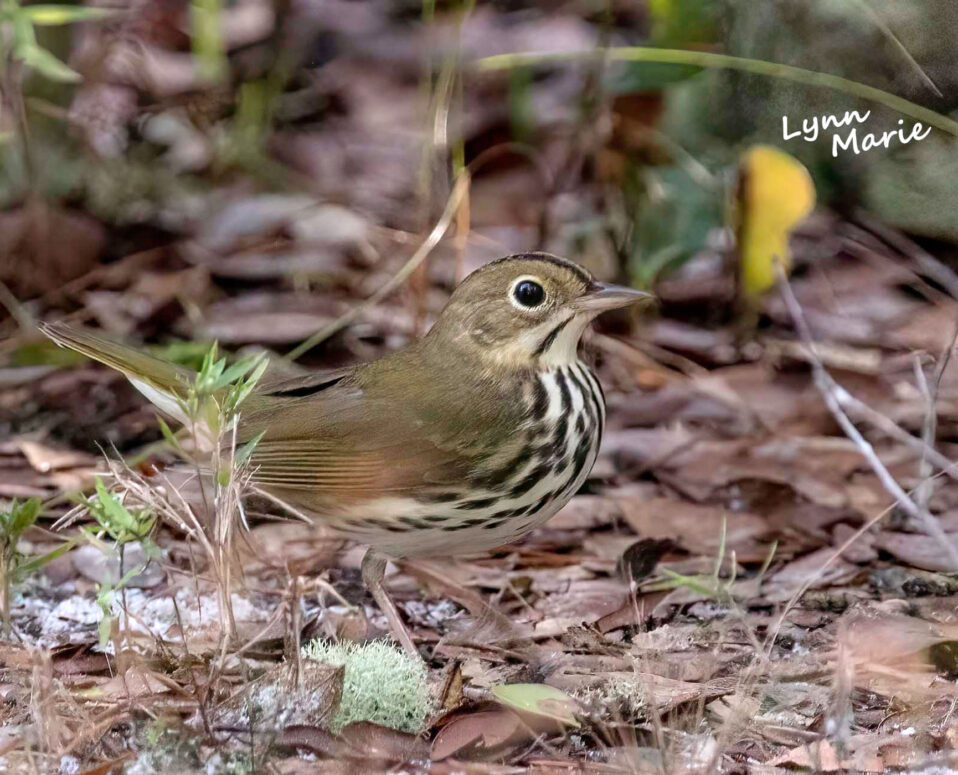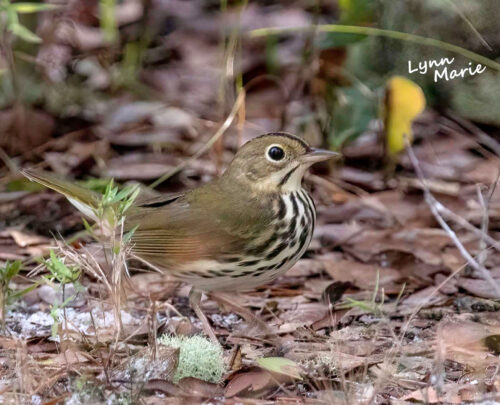The ovenbird (Seiurus aurocapilla) gets its name from the shape of its nest. The dome and side entrance make it resemble a Dutch oven. Their range is the eastern and central United States and parts of Canada, extending downwards towards Mexico and Central America. Florida is part of their nonbreeding habitat.
Ovenbirds generally avoid open fields and cultivated areas. They prefer uninterrupted forests with close canopies. If mature forests are unavailable, they can live and feed along coffee trees or mangroves in agricultural lands. Even though they prefer leaf litter when hunting for invertebrates, they will forage in grasses, rocks, or mud near water. In their winter habitats, they are flexible in what they eat. They can add seeds to their diets and specialize in locally abundant prey like ants. Whereas they breed and rear their young as a pair in their breeding habitats, they are generally solitary on their winter grounds.
Ovenbirds are abundant, and their population is stable, increasing slightly over the years. They are of low conservation concern; However, they still face threats from forest fragmentation and disruption of industrial noises. During migration, large numbers can face casualty from colliding with towers and tall buildings.
Cool Fact: The abundance, wide distribution, and relative ease of observation have made the ovenbird a model songbird in scientific studies for nearly a century. These studies have helped scientists understand the effects of logging and habitat fragmentation on migrating songbirds.



Recent Comments